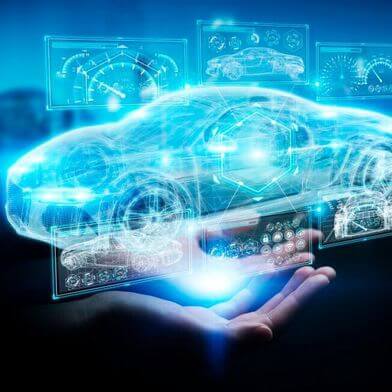My Evil Twin
You can’t open a magazine or technical journal these days without seeing a mention of digital twins. But where do digital twins fit into the asset management conceptual model?
 AUTHORS: Mark Knight and Tom Smith
AUTHORS: Mark Knight and Tom Smith
A digital twin is a digital representation of a physical object or system so you can argue that they fit wherever physical assets fit. Digital twins can be virtual replicas of physical devices/systems and can be modeled to receive input from sensors gathering data from a real-world counterpart and emulate their performance. This allows data scientists to run simulations before actual devices are built and deployed or to adjust the operation and configuration of existing devices. The explosion of IoT sensors are part of what makes digital twins possible but what did we do before digital twins?
Have you seen the movie Apollo 13? Do you remember the scenes where engineers on the ground were trying to recreate the emergency situation faced by the astronauts after their Apollo spacecraft was crippled by an oxygen tank explosion? Spacecraft have complicated interdependent systems that have to be turned on in just the right sequence as dictated by lengthy checklists. Miss a step and you can do irreparable damage. On the ground the teams in Houston had to work out how to stretch the lunar module’s consumables to last the entire trip and how to get the command module reactivated and configured to survive a re-entry, using the same hardware and software on the ground that the astronauts were piloting over 200,000 miles away.
Today we have the ability to make simulations in real time or even to run multiple parallel simulations for systems. The more that a digital twin can duplicate the physical object, the more likely that efficiencies and other benefits can be found. They provide a real-time look at what's happening with physical assets.
A similar but different concept is hardware-in-the-loop simulation where one or more components of a system are replaced with simulated virtual components, or where a simulation includes real hardware components in order to test out its performance without causing damage to physical systems.
Digital twins have transformed Formula One, which was an early adopter of the concept. Teams are developing more reliable, higher performing, and much more complex cars than in the past. Not only do teams use simulators to evaluate the performance and reliability of new parts but sensors continuously stream data during races that gets analyzed in real time by teams around the globe.
But keep in mind that that Gartner warns that digital twins aren't always called for and can increase complexity and therefore cost. The biggest concern most businesses have who are interested in this technology have is the risk of misrepresenting the object or system they want to replicate using this technology. Or the risk that the twin can fall out of date with field changes.
Digital twins can provide great benefits but what could go wrong? What if the actions of your twin triggers a poor decision? Trust is hard won but easily lost so how do you prevent your digital twin from becoming the evil twin and ruining your decision-making? The key is to understand which information is needed, and how often to refresh, and how the twin performs its simulations.

